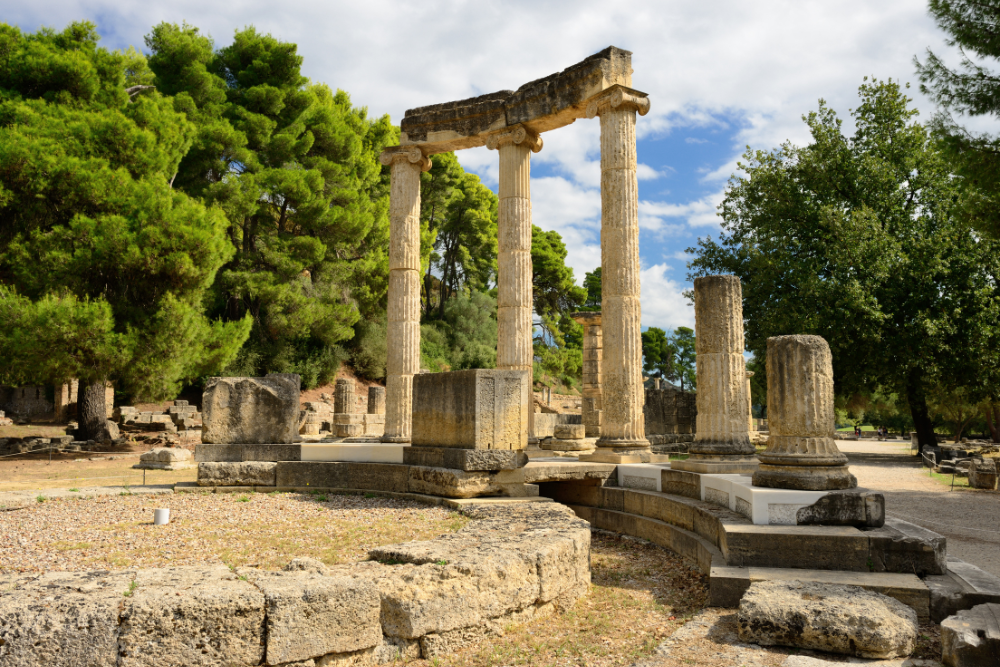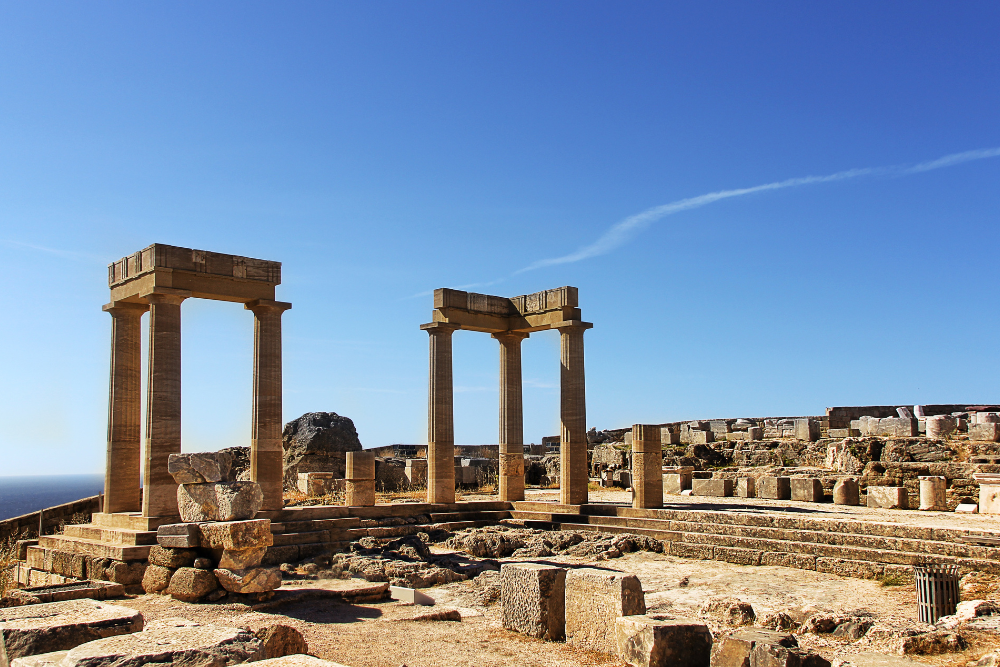Ancient Olympia, the birthplace of the Olympic Games, is one of Greece’s most treasured archaeological sites and a symbol of ancient athleticism and cultural achievement. Nestled in the lush Peloponnese region, this historic destination invites travelers to explore its ancient ruins, learn about its storied past, and enjoy its serene surroundings. Whether you’re a history enthusiast, an archaeology fan, or simply a curious traveler, Ancient Olympia offers a fascinating glimpse into the ancient world. Here’s your complete travel guide to this iconic destination.
Getting to Ancient Olympia
Ancient Olympia is located in the western Peloponnese, approximately 300 kilometers from Athens and 120 kilometers from Patras.
- By Car: From Athens, take the Corinth-Patras highway and follow the signs to Olympia. The drive takes about 3.5 to 4 hours.
- By Train or Bus: Buses run regularly from Athens and Patras to Olympia. Train services are less frequent but offer a scenic journey.
- By Tour: Guided day trips from Athens or nearby cities often include transportation, entry fees, and expert commentary.
Highlights of Ancient Olympia
1. The Archaeological Site
The heart of Olympia is its extensive archaeological site, showcasing the grandeur of ancient Greek civilization.
- Temple of Zeus: Once home to the colossal statue of Zeus, one of the Seven Wonders of the Ancient World, the temple ruins still evoke awe.
- Temple of Hera: Among the oldest structures in Olympia, this temple highlights early Greek architecture. It’s also where the Olympic flame is lit for modern Games.
- Ancient Stadium: Step onto the very grounds where athletes competed in the original Olympic Games. The track and stone starting blocks remain intact, and visitors can imagine the roar of ancient crowds.
- Philippeion: A circular monument dedicated to the Macedonian royal family, showcasing intricate craftsmanship.
2. The Archaeological Museum of Olympia
This world-class museum houses artifacts unearthed from the site, offering a deeper understanding of its history.
- Highlights Include:
- The Hermes of Praxiteles, a stunning marble sculpture by the renowned ancient sculptor Praxiteles.
- The detailed pediments from the Temple of Zeus, depicting mythological scenes.
- Artifacts such as tools, armor, and pottery that shed light on ancient daily life.
3. Museum of the History of the Olympic Games
Learn about the evolution of the Olympic Games, from their origins in 776 BCE to their modern revival. This museum is ideal for understanding the cultural and athletic significance of Olympia.
Things to Do in Olympia
1. Walk Through History
Stroll through the ruins to soak in the atmosphere of this once-thriving religious and athletic center. Hire a local guide or use an audio tour for detailed insights into the site’s significance.
2. Attend the Modern Olympic Flame Lighting Ceremony
If you’re visiting before the Summer or Winter Olympics, you might witness the ceremonial lighting of the Olympic flame at the Temple of Hera—a unique and symbolic experience.
3. Explore the Surrounding Area
- Kronios Hill: Hike to the top for panoramic views of Olympia and its surroundings.
- Alpheios River: Perfect for a peaceful walk or picnic along its banks.
Where to Stay in Olympia
Ancient Olympia offers a range of accommodations to suit all budgets:
- Luxury:
- Arty Grand Hotel: A stylish option with modern amenities and a spa.
- Europa Hotel: Known for its excellent service and stunning views of the valley.
- Mid-Range:
- Hotel Pelops: A charming, family-run hotel within walking distance of the archaeological site.
- Olympic Village Hotel: Comfortable rooms and a pool, ideal for families.
- Budget:
- Pension Posidon: Affordable and cozy, offering great value for money.
Dining in Olympia
Enjoy traditional Greek cuisine at local tavernas.
- Taverna Bacchus: Known for its authentic Greek dishes and scenic views.
- Symposium Restaurant: Offers a mix of classic and contemporary Greek fare.
- Aegean: Perfect for a quick bite with a focus on local ingredients.
Best Time to Visit Olympia
- Spring (April to June): Ideal weather for exploring the site and enjoying the surrounding nature in full bloom.
- Autumn (September to November): Pleasant temperatures and fewer crowds make this a great time for a visit.
- Summer (July to August): While the site is busiest, visiting early in the morning or late in the afternoon can help you avoid the heat and crowds.
Tips for Visiting Ancient Olympia
- Wear Comfortable Shoes: The site covers a large area with uneven terrain.
- Stay Hydrated: Especially in the warmer months, bring plenty of water.
- Arrive Early: Beat the crowds and enjoy the site in relative tranquility.
- Photography: Capture the stunning ruins and landscapes, but be mindful of restricted areas.
- Guided Tours: Enhance your experience with a professional guide to gain deeper insights into Olympia’s history.
Conclusion
A visit to Ancient Olympia is a journey into the heart of Greek history and culture. Walking through its ancient ruins, standing on the grounds of the first Olympic Games, and marveling at its timeless artifacts offer an unparalleled experience. Whether you’re a history lover or a curious traveler, Olympia’s blend of history, mythology, and natural beauty ensures an unforgettable trip. Take your time to explore, and let the spirit of this ancient wonder inspire you.












